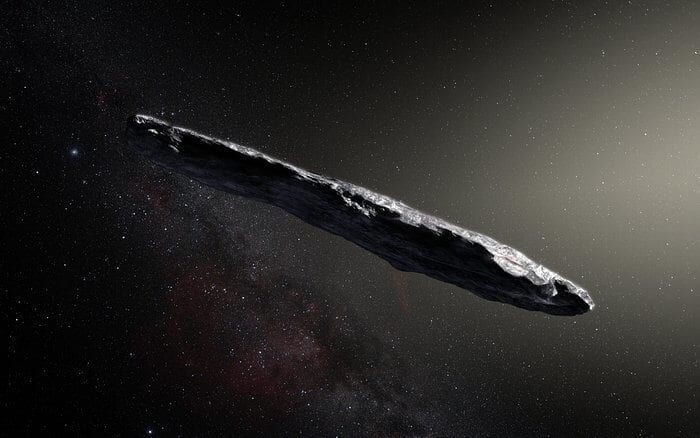Oumuama: A Molecular Hydrogen Iceberg
A new, suggestive hypothesis on the chemical composition of the interstellar visitor Oumuamua could explain its strange acceleration.
The real nature of Oumuamua, the cigar-shaped interstellar object observed by terrestrial telescopes on October 19th, 2017, has long been questioned. Its strange acceleration immediately seemed similar to that of comets, driven by the heat of the Sun which sublimates their outer layers of ice.

However, while the tail of comets reflects sunlight and is clearly visible to astronomical instruments, no glare has ever been noticed around the “alien visitor” Oumuamua.
Even aliens have been brought up to explain its curious motion, but a new study published in the Astrophysical Journal Letters manages to motivate the characteristics of Oumuamua more scientifically.
According to astronomers from the Universities of Yale and Chicago, Oumuamua could be composed of frozen molecular hydrogen, a material that would explain some of its properties and that would also be widespread in our galaxy.

The theory is inspired by the idea, previously put forward by Yale and Caltech scholars, that this space cigar is actually a comet whose outflow of gas and dust is for some reason invisible to telescopes.
The team then looked for material that could explain this “invisibility”, as well as the acceleration shown by Oumuamua during its passage inside the Solar System. The only type of ice compatible with the observed characteristics is that based on molecular hydrogen, which forms at temperatures just slightly above absolute zero.
